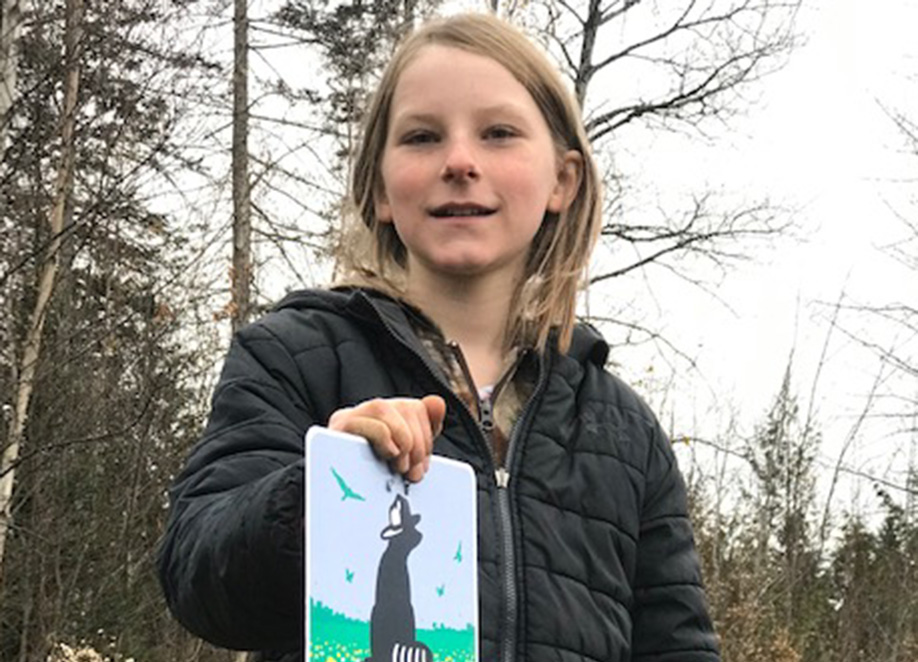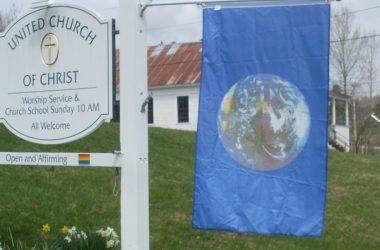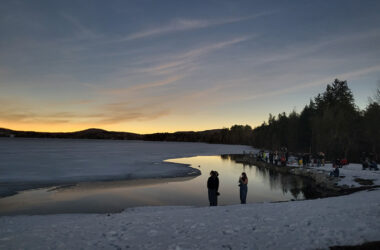
courtesy photo
Zoryan Ivakhiv-Gray is in his garden recently certified as a wildlife habitat by the National Wildlife Foundation. The garden is located on the property of his grandmother, Nancy Hill, on Baker Hill Road in Greensboro.
GREENSBORO – The National Wildlife Federation (NWF), America’s largest wildlife conservation and education organization, has certified that Zoryan Ivakhiv-Gray has successfully created a Certified Wildlife Habitat in Greensboro through its Garden for Wildlife movement. NWF celebrates his effort to create a garden that supports birds, butterflies, bees, frogs and other local wildlife. Every Certified Wildlife Habitat garden provides natural sources of food, water, cover and places to raise young and is maintained in a sustainable way that incorporates native plants, conserves water and doesn’t rely on pesticides.
Ivakhiv-Gray, who is 12 years old, says “Just a few years ago, my grandmother’s yard on Baker Hill Road was all mowed lawn. It was a void for the local songbirds, hawks, snakes, and chipmunks. But now that we have let wildflowers grow, planted native shrubs, and let the fringes of her lawn grow wild, it abounds with frogs, warblers, snakes, butterflies, chickadees, and bumblebees. It also provides a safe crossing place along the road for animals such as deer and bears when they travel between different forest and meadow patches.”
Started in 1973, the Garden for Wildlife movement is the oldest and largest native plant-habitat program, recognizing over 289,000 Certified Wildlife Habitat gardens across the United States to date, encompassing an estimated four million acres that support wildlife locally.
In Vermont NWF partners with the Vermont Natural Resources Council (VNRC). Backyards, urban gardens, school grounds, businesses, places of worship, campuses, parks, farms, zoos, and community landscapes can all be recognized as wildlife habitats through the program. “We are excited about this new Certified Wildlife Habitat, as it provides native plants and essential habitat elements. Research shows certified properties have the potential to support twice as much wildlife compared to non-certified properties” said Mary Phillips, Head of Garden for Wildlife/Certified Wildlife Habitat.
“Anyone, anywhere can restore wildlife habitat right in their own yards and communities,” said NWF Naturalist David Mizejewski. “Whether you garden in a suburban yard, an urban area or a rural plot of land, you can make a difference for local wildlife. Creating a Certified Wildlife Habitat garden is fun, easy and makes a real difference for neighborhood wildlife. It’s the perfect grassroots way to think globally and act locally and help birds, butterflies, bees and other wildlife,” he added.
For more information on NWF’s Garden for Wildlife movement and how to qualify to have a garden space recognized as a Certified Wildlife Habitat, visit nwf.org/garden.







